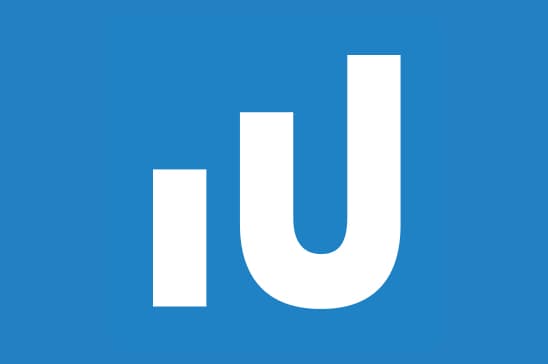5 Steps to Building Wealth in Your 50s
Building wealth in your 50s means you’re now seriously preparing yourself for retirement. Hopefully you’ve been investing aggressively, saving much of your money, keeping debt low and living a somewhat frugal lifestyle.
Still, your journey to building great wealth is far from finished. And there are many steps you can still take to make sure you can have the retirement of your dreams.
In this article, we will look at five ways for you to continue building wealth in your 50s. But before that, let’s review what you should have been doing before now.

Building Wealth Throughout Your Life: A Review
Building wealth in your 50s is based on the foundation of wealth you’ve built up previously in your life. I have recently written a series of articles on how to do that, which you can find here:
Read More!
- 5 Steps to Building Wealth in Your 20s
- 5 Steps to Building Wealth in Your 30s
- 5 Steps to Building Wealth in Your 40s
- 5 Steps to Building Wealth in Your 60s
- 5 Steps to Building Wealth in Your 70s
Although I highly encourage you to read each of these articles in full, I’ve got a quick recap for you. Some of the major steps you should have been taking along the way include…
- Building six months of emergency fund reserves
- Getting rid of bad debt and minimizing good debt
- Saving at least 30% of your net pay or more per month
- Maximizing your 401(k) and opening an IRA or Roth IRA
- Investing as much as possible in the stock market.
Those articles are filled with many other tips for making the most of your income and building wealth throughout your life. And now we can continue on with how to build wealth in your 50s.
Building Wealth in Your 50s
1. Keep the College Costs Down
If you have children, there’s a good chance that some or all of them are in college or graduate school now. Keeping education costs relatively low is essential for building wealth in your 50s.
Of course, you may want to help your children shoulder the burden of college, and there’s certainly nothing wrong with that. Still, there are many ways to keep college costs low.
One way, of course, is to let the kids live at home and attend a local school. The price of room and board at state colleges is $8,887 on average, while for pricey private schools it’s $10,089. And that’s per year.
Generally, state schools can provide an excellent education at a far lower cost than private schools. In fact, the best state schools are far better than many of the private colleges and universities across the country.
Finally, make sure you are taking advantage of financial aid, especially in the form of packages you don’t have to pay back, like work-study programs and scholarships. And lastly, try not to take out more student loans than you absolutely need to for your kids.
2. Invest Your Raises and Bonuses
By now you’re hopefully used to saving and investing a lot of the money you earn. The average 50-something household, up to age 55, has an average savings balance of $124,831. On average, if you’re between 55 and 61 years old, it’ll be closer to $163,577.
At this point, whether you’re a wage worker, salaried employee or entrepreneur, it’s likely that you are getting closer to the twilight of your career.
Your earnings from your primary work will likely never be much higher. If you do earn significant raises or bonuses at this stage, plan to make sure you are saving or investing most of it.
Of course, you are allowed to live a bit! There’s nothing wrong with taking a vacation here or splurging on a big-screen television there.
But on the whole, now is not the time to give up on building wealth, even though you’re in your 50s. Keep going, live as frugally as you can and continue to make wise money and investing decisions throughout this decade.
3. Do Not Raid Your 401(k)
If at some point you have a major expense – a second home or a Harvard tuition bill for your child – you may be tempted to raid your 401(k) and take out a loan against your earnings.
Do. Not. Do. It.
Thanks to the magical power of compound interest, your 401(k) and other retirement accounts (such as a Roth IRA) should be earning you more wealth than ever. This is a major key to building wealth in your 50s.
The median 401(k) balance of a 50-something person is $220,188. Your capital is likely bigger than ever. And you’re likely earning unprecedented interest.
Your wealth grows exponentially in your later years as you invest. So it’s best not to do anything to disrupt the earning power of your 401(k). To see this firsthand, check out our free investment calculator.
Also, you don’t want to be taking on more debt in your 50s anyway if you can avoid it. If you need more cash, the best thing to do now is to try and find ways to cut down on your expenses. You could even consider downsizing your house or getting rid of a car to save more money each month.
Step 4. Take Advantage of Annual Catch-Up Contributions
Did you know that when you are building wealth in your 50s, you can take advantage of catch-up contributions to build up your retirement accounts even faster? ‘Tis true!
If you are age 50 or over, you can now contribute up to an extra $6,500 to your 401(k) per year. You can also do this in some other retirement accounts, including a 403(b) plan and most 457 plans.
You can also increase your contribution to an IRA by $1,000 from the standard $6,000, for a total of $7,000 per year. And it can be good to do that if you have an IRA or a Roth IRA.
5. Build Wealth by Investing in Some High-Quality Stocks
The final step to building wealth in your 50s is to invest in some high-quality stocks. Now, you may be thinking to yourself, isn’t that what I’ve been doing all these years?
Well, it may be. On the other hand, you may have been invested in something like a target-date fund in your 401(k). Or you may have been essentially investing in the stock market as a whole with an ETF like the SPDR S&P 500 ETF Trust (NYSE: SPY).
Investing in SPDRs and similarly broad index ETFs can be a great investing strategy for much of your built-up wealth. But if you’re really looking to outperform the market with at least some of your investment money, an S&P index fund isn’t going to cut it.
Instead, you might want to invest this money in a handful of high-quality stocks. And ideally, you can diversify your holdings so they are not all in one industry like tech or pharmaceuticals.
Final Thoughts on Building Wealth in Your 50s
Hopefully, by this time, you are in the home stretch. You can almost taste pure financial freedom – the ability to live your life fully, on your own terms and without having to worry about your day job or earning that biweekly paycheck.
If you are behind on your retirement savings, that’s okay too. You still have time to catch up by cutting your expenses as much as possible, saving zealously and investing aggressively.
And if you’re interested in learning more about investing and how to pick stocks, continue exploring the top investment opportunities today…
About Brian M. Reiser
Brian M. Reiser has a Bachelor of Science degree in Management with a concentration in finance from the School of Management at Binghamton University.
He also holds a B.A. in philosophy from Columbia University and an M.A. in philosophy from the University of South Florida.
His primary interests at Investment U include personal finance, debt, tech stocks and more.





